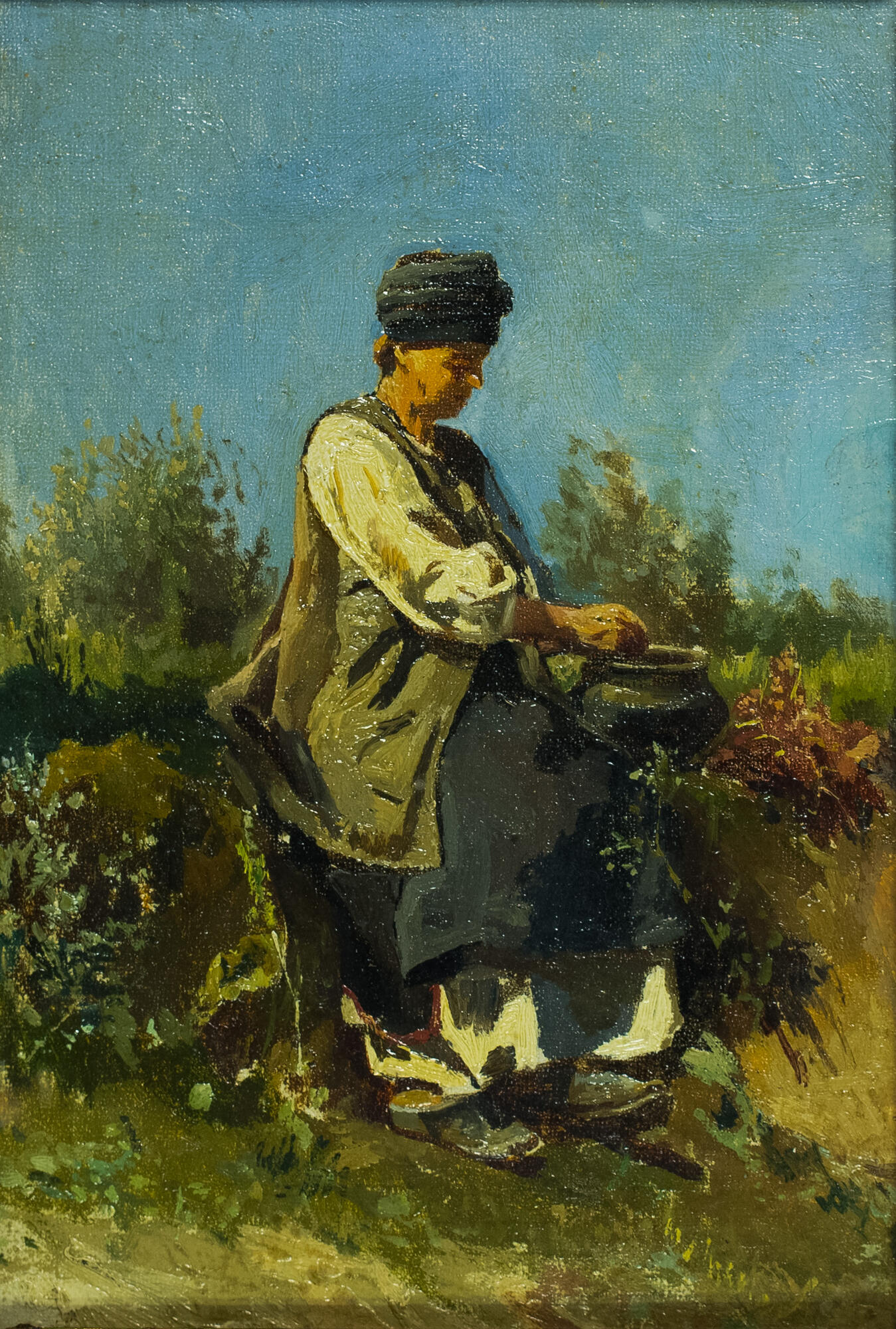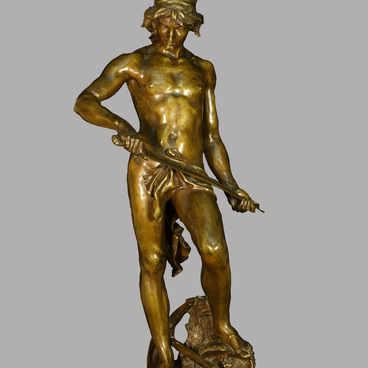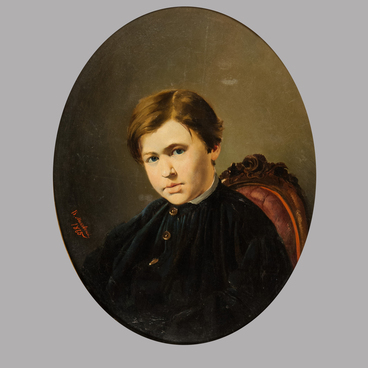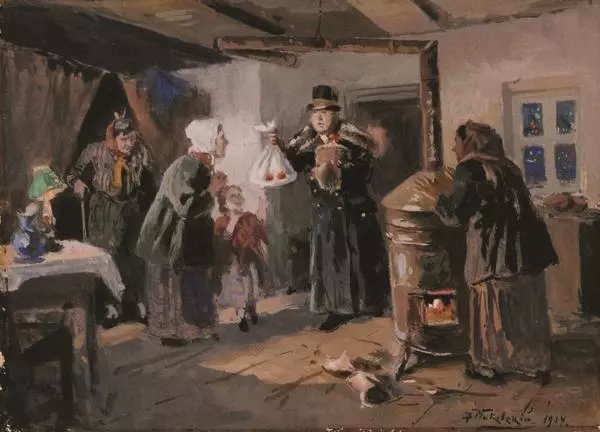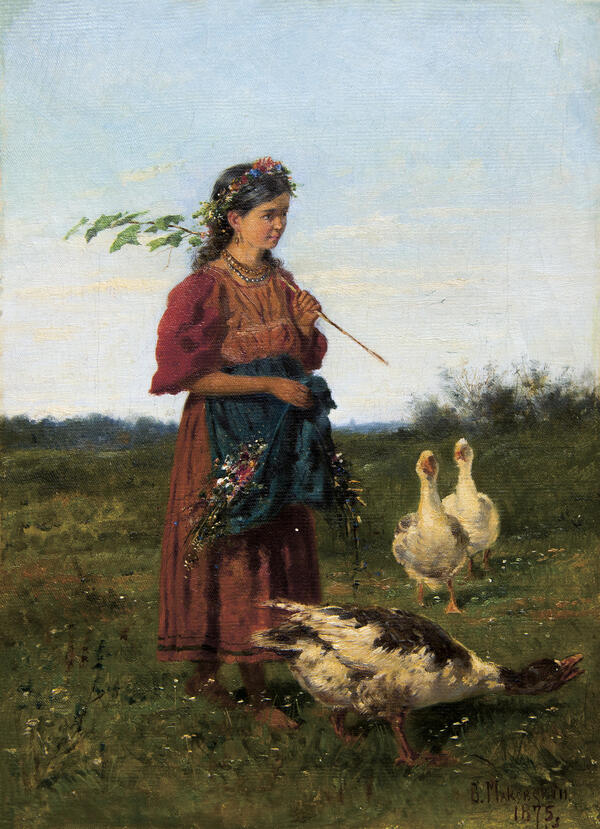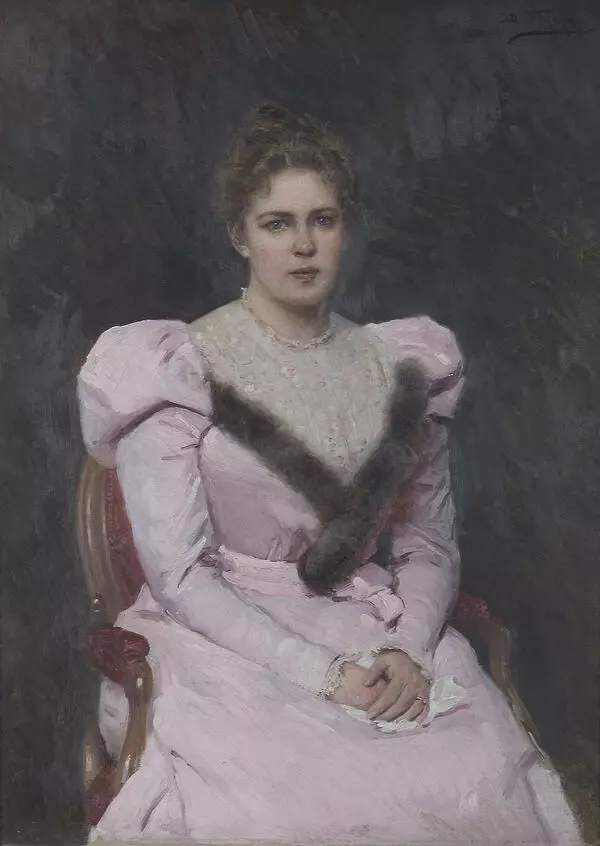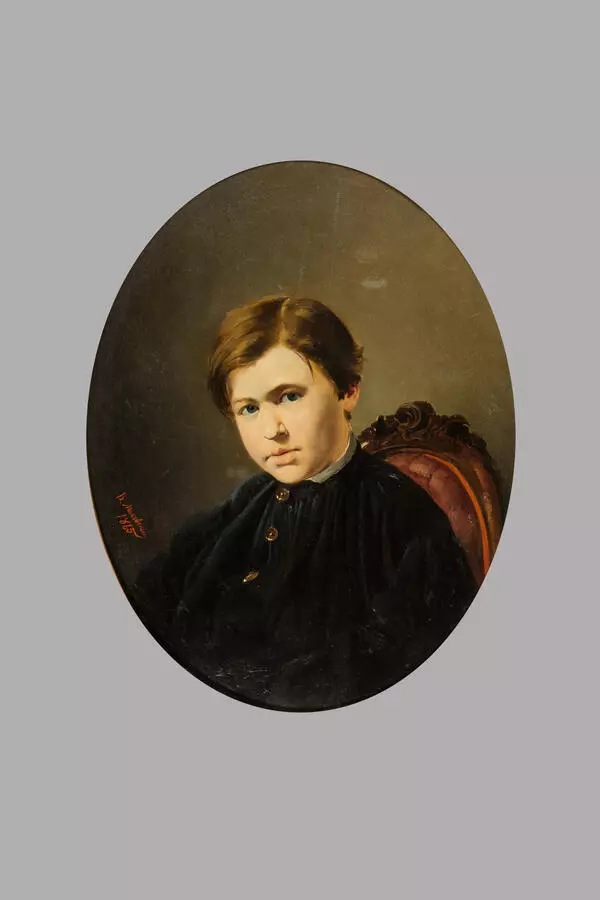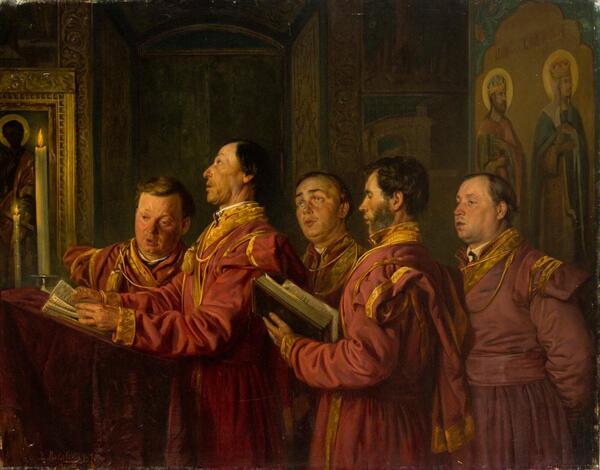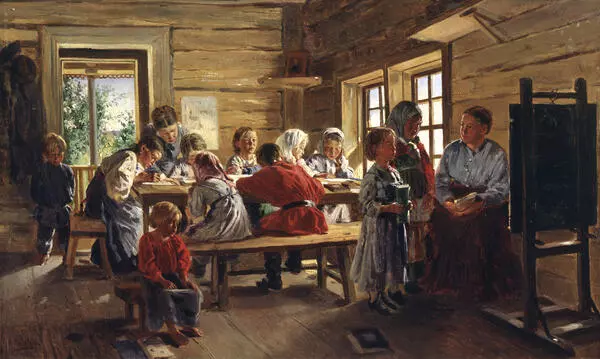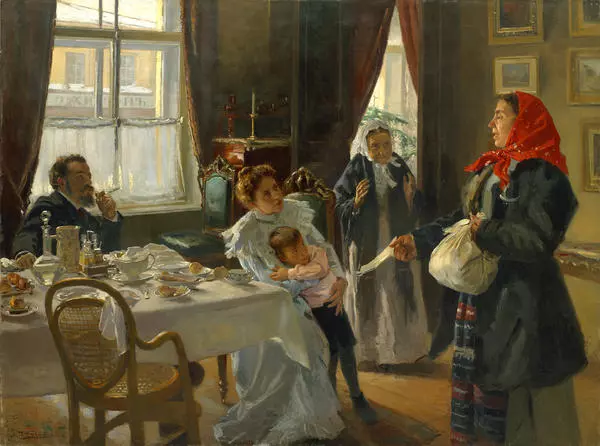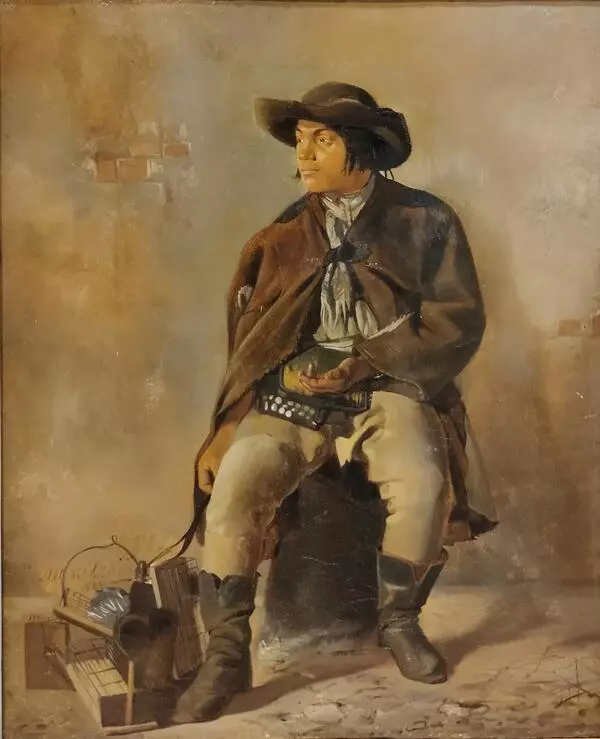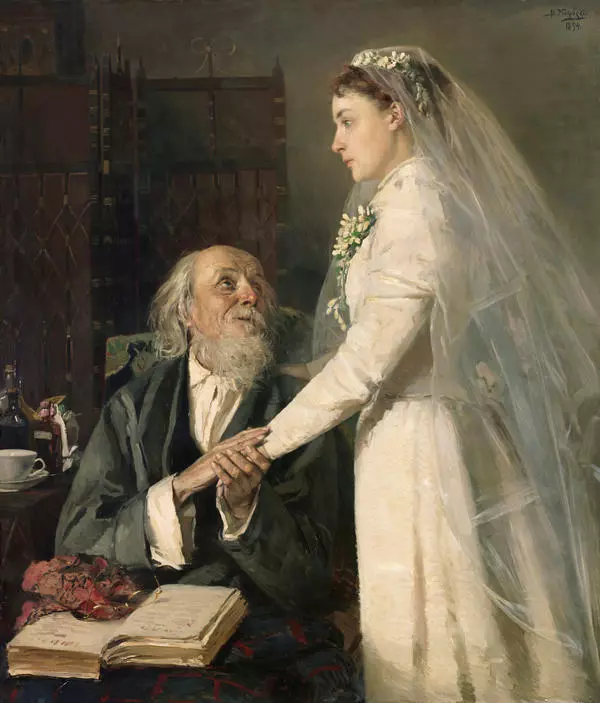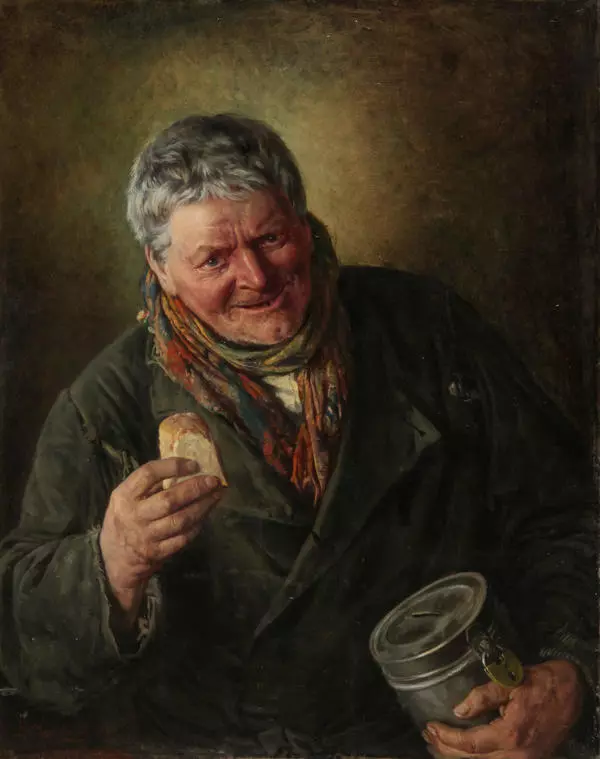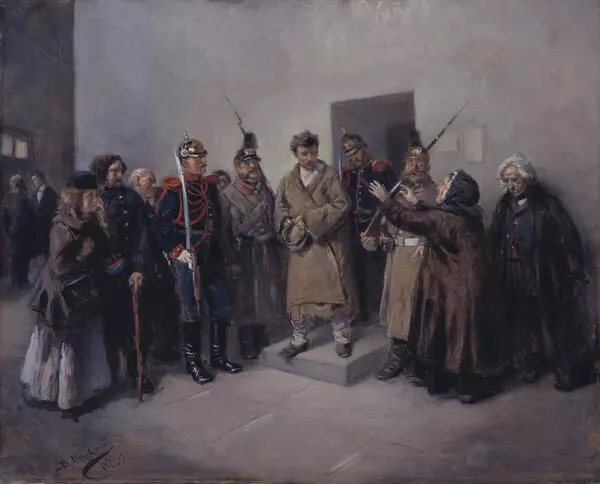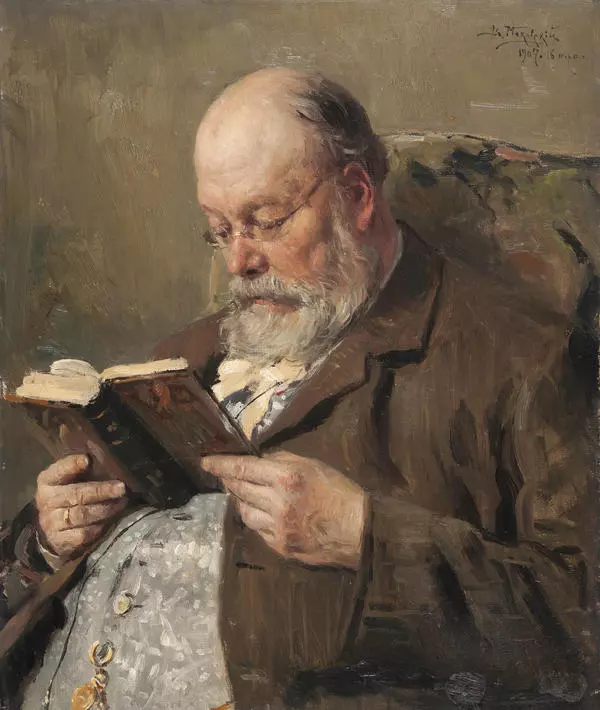The artist of this modest-size canvas belongs to a number of popular Russian artists of the second half of the 19th — early 20th century, known mainly as genre painters. But he was also a portraitist, a draughtsman, engraver and lithographer, and created landscapes and works on gospel themes. Thus, the artist was a very gifted person who made a remarkable impact on the history of Russian culture.
Vladimir Makovsky came from a talented family, several members of which became fascinating artists, who were quite dissimilar both in their favorite themes and individual manner of painting, which was sometimes very vivid. Makovsky’s father was an accountant in the Expedition of Kremlin Construction Works. He both painted and collected paintings. One of Vladimir’s brothers, Konstantin, created numerous spectacular works, often of a salon nature. Nikolay was an architect by education, but he also became a talented genre painter and portraitist and, although he had a relatively short life, earned a prominent status in Russian art.
Vladimir was distinguished by his amazing creative activity. After graduating from the Moscow School of Painting, Sculpture and Architecture (and after that — the Imperial Academy of Arts), he then taught at the school in 1882–1894. During that period, he worked as a painter in Ukraine, the Oryol Governorate, Tiflis, Crimea and in the Caucasus. He created many small-format and humorous paintings, but along with them he also produced such an accusatory canvas as “A Mother’s Visit”.
The work “Ukrainian Woman” is distinguished by its study-like character. The image of a middle-aged peasant woman in traditional clothes, doing household work, is masterfully painted from life with a confident hand. It is impossible not to note the skillful modeling and pure color palette with well-fitting combinations of blues and greens with dull tones and white clothes. Although the plot is understated, there is still an artistic completeness in the canvas that can fully satisfy even the most discerning eyes. This is a unique type of a chamber painting, designed for a modest living space, for interior décor in accordance with the aesthetic norms of the last quarter of the 19th century.
The painting came to the museum in 1945 from the State Procurement Commission.
